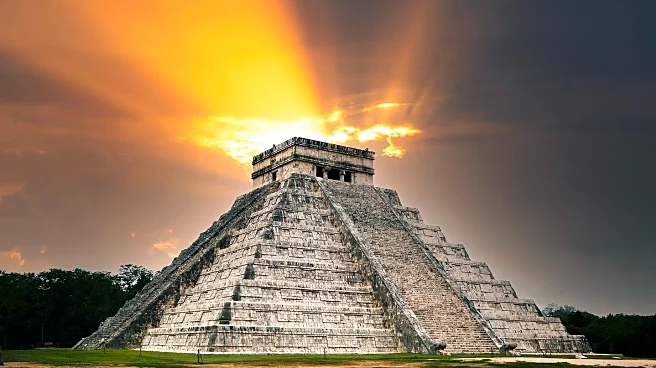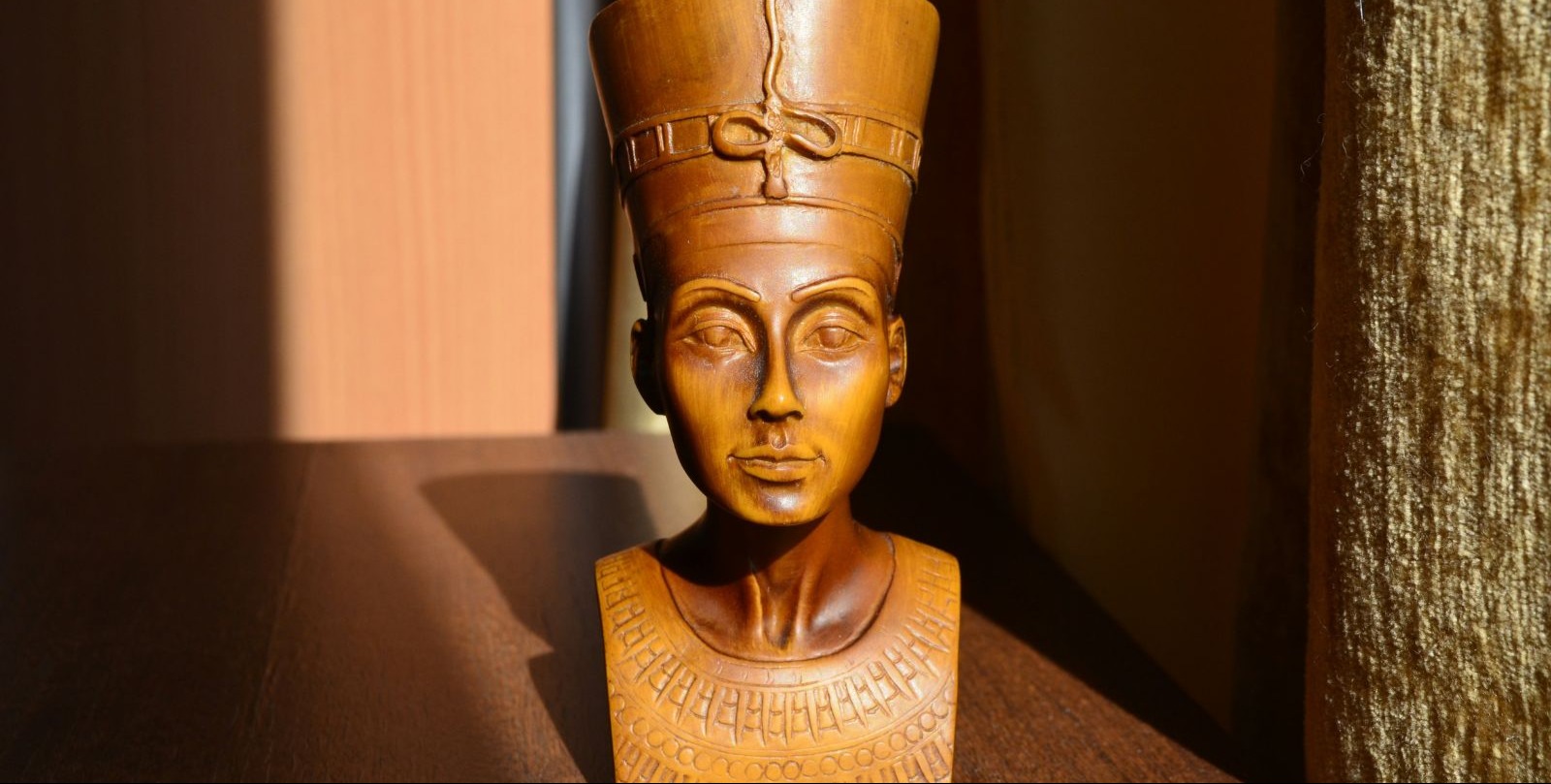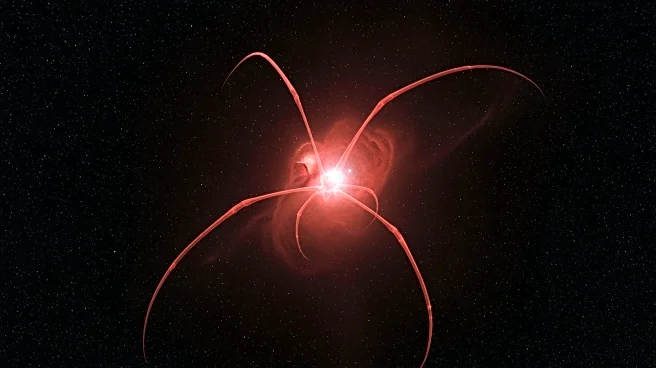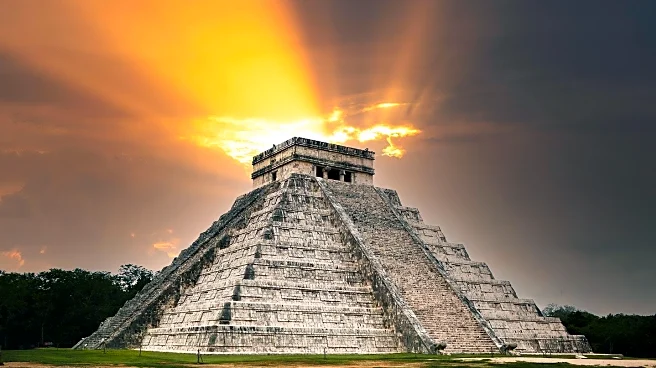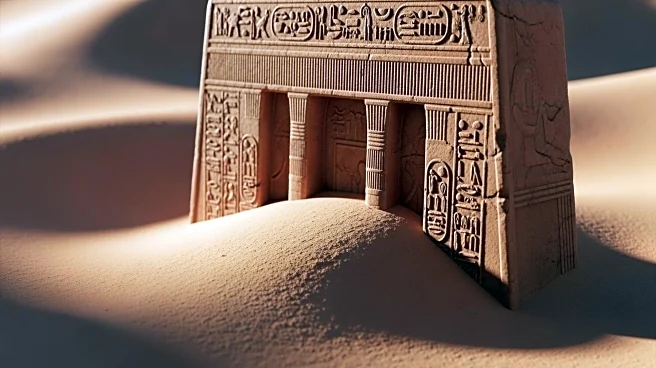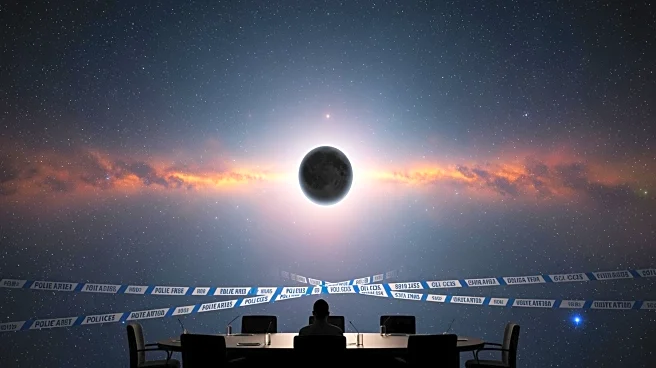What's Happening?
A new study by Mesoamerican scholars John Justeson and Justin Lowry has revealed that the ancient Maya Dresden Codex contains calculations capable of predicting eclipses centuries in advance. The Codex uses
overlapping cycles of 223 or 358 months to maintain precise lunar and solar eclipse predictions. This discovery highlights the advanced astronomical knowledge of the Maya civilization, which utilized a 260-day divinatory calendar alongside a 365-day calendar for civilian purposes. The study suggests that the Codex's eclipse table evolved from a lunar calendar aligned with the sacred divinatory cycle.
Why It's Important?
The findings demonstrate the sophistication of Maya astronomical practices and their ability to make long-term predictions. This knowledge challenges modern perceptions of ancient civilizations and underscores the importance of preserving historical artifacts. Understanding the Maya's methods could provide insights into their cultural and scientific achievements, influencing current studies in archaeology and history. The study also highlights the potential for ancient knowledge to inform contemporary scientific practices, particularly in the field of astronomy.
Beyond the Headlines
The study of the Dresden Codex not only sheds light on Maya astronomical practices but also raises questions about the preservation and interpretation of ancient texts. The ethical considerations of studying and displaying such artifacts are significant, as they represent cultural heritage and historical knowledge. The research may prompt further exploration of other ancient texts and their potential contributions to modern science. Additionally, the study emphasizes the need for interdisciplinary collaboration in uncovering and understanding historical knowledge.
